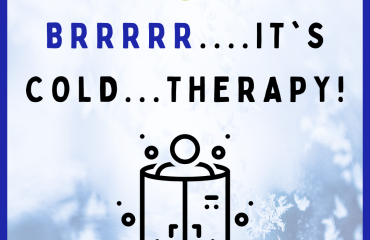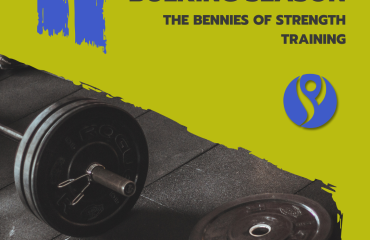Cupping therapy has been used in Chinese Medicine for over 2,000 years! The earliest documented cupping dates back to the Han Dynasty (206BCE- 220CE). History also documented the Egyptians performing cupping around 1500 BC and even Hippocrates dabbled with cupping around 400 BC!
In Chinese Medicine, cupping is used to treat several things such as influencing the patient’s Qi, drawing out wind/cold/damp/heat pathogens, treating systemic conditions (ex: asthma, indigestion), etc. The cups are typically placed along the Chinese meridians of the body. As chiropractors, using cupping for those types of treatments are out of our scope of practice but we can use cupping for soft tissue healing. Cupping became mainstream in 2016 when Michael Phelps showed up looking like a spotted Whale Shark during the Olympics. I call it, being “Michael Phelp’d.”

The Anatomy and Physiology of Cupping
So how does cupping work? The cups chiropractors, massage therapists, and physical therapists use are either silicone or plastic and don’t involve fire. A small handheld vacuum pumps the skin, muscle, fascia, and other soft tissues up into the plastic cups. For silicone cups, pressing down on the top of the cup and placing it on the skin will bring the soft tissues into the cup. The cups create a negative pressure in the soft tissues, allowing the area to decompress.
Cupping helps treat muscle adhesions. Muscle adhesions, known to most as “knots”, may occur from events such as trauma, dehydration, overuse, inflammation, poor posture, stress, and surgery, etc. When you have a muscle injury, the body will send collagen fibers to the muscle to help repair the damage. As the collagen works to repair the injury, the fibers may form in a non-linear fashion, creating a muscle adhesion. Cupping releases the adhered fibers, giving them space elongate, unfold, and realign. Fascia in our body is closely tied with muscle adhesions, loosening the fascia helps restore normal muscle function, increase blood flow, and reduces pain.
Lymphatic fluid, or lymph, is a clear, colorless fluid that plays a crucial role in the body’s immune system and waste removal processes. It circulates through the lymphatic system, a network of vessels and nodes, to collect waste products, toxins, and excess fluid from tissues, transporting them to lymph nodes where they will filter and eventually return them to the bloodstream. Lymph also contains lymphocytes, a type of white blood cell that helps fight infections.
Lymphatic fluid also contains a component called ground substance which plays a vital role in facilitating the movement of nutrients, waste products, and signaling molecules between cells. Ground Substance is made of water, glycosaminoglycans, proteoglycans, glycoproteins, and hyaluronic acid. These components keep the extracellular fluid hydrated and viscous. In static conditions, such as when an adhesion occurs, the ground substance may not flow or liquify as well as before. With cupping, ground substance becomes less viscous and allows easier movement of cells, fibers, and waste products, and helps stabilize tissues.
Cupping increases blood flow to the area, bringing oxygen and nutrients to the tissues. The increased blood flow aids with healing and breaks down muscle adhesions. Cup marks should disappear within 5-7 days, sometimes it may take longer depending on your body. Cupping can also affect the nervous system. Cupping may stimulate the “rest and digest” response in the body, alleviating pain and reducing stress.

Benefits of Cupping:
- Detox: Lifting the fascia into the cup may promote the movement of lymph fluids and allow toxins/metabolic waste to be removed from the body.
- Pain Relief: Cupping is effective with alleviating muscle adhesions, fascial tension, lower back pain, migraines, etc.
- Enhances Recovery: Cupping after physical activity may help with speeding up the recovery process.
- Improving Mobility: Routine cupping sessions may help improve and maintain joint/muscle mobility.
- Stress Reduction: Cupping helps the muscles relax and activates “rest and digest” mode in the nervous system which may help reduce stress and improve sleep.
Are you ready to look like Michael Phelps? Although cupping is generally safe and has many benefits, some conditions are a contraindication for cupping. Some examples of contraindications are rhabdomyolysis, connective tissue disorders, open wounds, active cancers, etc. Always be sure to consult us or your primary care provider and receive cupping from a trained professional.
Cupping has become pretty trendy in Western medicine but is a time-tested technique that provides benefits for musculoskeletal health and overall well-being. If you have questions or concerns about cupping, please reach out to us!
References:
- https://www.cuptherapy.com/
- Simmonds, N., Miller, P., & Gemmell, H. (2012). A theoretical framework for fascia in manual therapy. Journal of bodywork and movement therapies, 16(1), 83-93.
- Stecco, C., Macchi, V., Porzionato, A., Duparc, F., & De Caro, R. (2011). The fascia: the forgotten structure. Italian journal of anatomy and embroyology, 116(3), 127.
- Stecco, A., Gesi, M., Stecco, C., & Stern, R. (2013). Fascial components of the myofascial pain syndrome. Current pain and headache reports, 17(8), 352.





